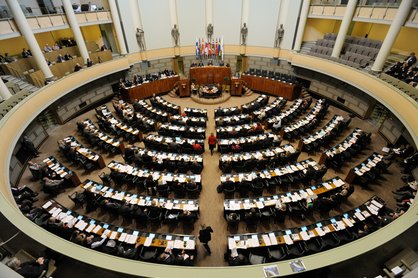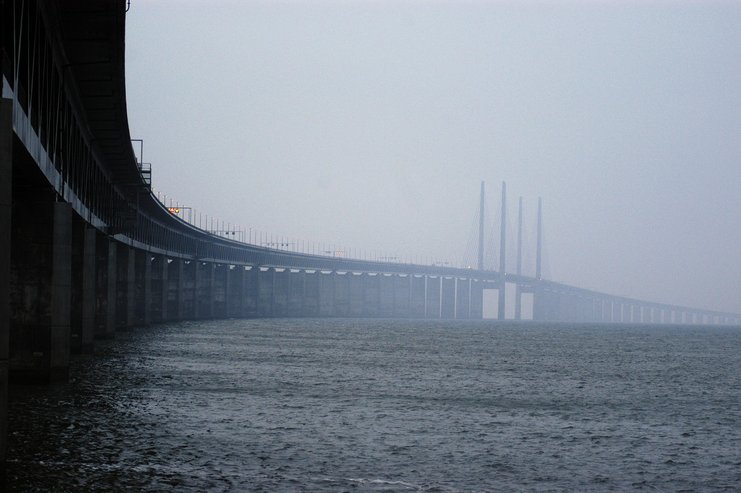The 1974 Nordic Environmental Protection Convention
The 1974 Nordic Environmental Protection Convention was the first international environmental convention of its kind. While Nordic cooperation and like-mindedness allowed the Convention to become a reality, the Nordic states had their sights set on extending key environmental principles to polluting states outside the region. In fact, the Convention was intended as a blueprint for future international conventions on reducing transboundary pollution – an ambition that has been partially realised. Given the increasing focus on the environment and global climate change today, it is worth revisiting the concrete commitment of the Nordic states and the three key principles of this pioneering – if not wholly successful – convention.

Nordic environmental cooperation saw its beginnings during the spring of 1967 when the Nordic Council organised a Conference on Soil and Water Pollution for officials, politicians, scientists, and representatives from nature conservation and industry. Over the years that followed, the Nordic Council – and later the Nordic Council of Ministers – created institutions for environmental cooperation at both the administrative and scientific levels. By the time the Nordic Environmental Protection Convention (NEPC) was signed on 19 February 1974, the environment had become an established policy issue for the Nordic countries, both in and outside the region. But what actually led the Nordic countries to sign a specific convention on environmental protection so early on? To answer this question, we need to look at the international development in the area as well as scientific advancement at the time.
Transboundary pollution in 1960s/70s
Pollution of bordering waterways and shared seas caused by urbanisation, industry, and oil spills, as well as transboundary air pollution from factories and the increasing use of private motor vehicles, were common problems in the late 1960s/early 1970s in the Nordics. In order to reduce transboundary pollution in the Nordic region, in June 1971, four delegates from the Danish and Swedish social democratic parties requested the Nordic Council to:
“recommend to the governments of Denmark, Finland, Norway and Sweden to enter into a Nordic environmental protection convention aimed at treating neighbouring countries’ environmental protection interest as equal with their own national legislation” (Nordiska rådet, 20:e sessionen, 1972, Helsingfors (Stockholm: Nordiska rådet, 1972), A 332/s, 495).

Picture: The Nordic Council Chamber. Photo: Johannes Jansson/norden.org.
Next to this regional, transboundary pollution, however, transnational pollution across the European continent (mainly in the form of air pollution) presented another - and likely more pressing – concern that motived this Nordic proposal.
By the end of 1970, Scandinavian atmospheric researchers had proven that transboundary air pollution from the European continent and the United Kingdom was causing acidification of lakes in southern Norway and south western Sweden. Calculations showed that Sweden received more than 50% of its sulphur dioxide (SO2) and particle emission from outside its own borders, while a major portion of Swedish sulphur emissions similarly spread to neighbouring countries. Since the Scandinavian peninsula was located downwind to Europe’s major industrial areas, the necessity of international measures and commitments seemed obvious in order to counter increasing environmental degradation: combating transnational pollution required international environmental policies.
At that time, an international environmental convention which would include numerous countries seemed rather unrealistic due to heightened geopolitics and different levels of environmental institutionalisation across Europe. However, the idea of providing a model for future international agreements attracted many Nordic parliamentarians and politicians, and the world awaited the first global environmental conference: the 1972 United Nations Conference on the Human Environment (or the ‘Stockholm Conference’).
The 1972 Stockholm Conference on the Human Environment
In the early 1970s, preparations for the first global conference on the human environment organised by the United Nations were also taking place, under the slogan ‘Only One Earth’. One important concept on the agenda was the principle of non-discrimination which was ultimately included in the resulting Stockholm Declaration: Principle 21 encouraged the parties to “ensure that activities within their jurisdiction or control do not cause damage to the environment of other States or of areas beyond the limits of national jurisdiction” (Stockholm Declaration of the United Nations Conference on the Human Environment, Principle 21, Report of the United Nations Conference on the Human Environment, p.5).

PICTURE: Mr. Maurice Strong, Sectretary-General of the UN Conference on the Human Environment (right) shows UN Sectretary-General U Thant a design for the official poster. To the left is Mr. Keith Johnson (Jamaica), Chairman the Preparatory Committee for the Conference. Photo: 15th September 1971, UN headquarters, New York. UN Photo/Teddy Chen.
But, the conference was also considered an opportunity for countries to brand themselves as environmental pioneers. Against this background, Nordic parliamentarians and politicians were motivated by the thought of creating a convention that, on the one hand, built upon the principle of non-discrimination and which, on the other hand, could be a “good blueprint for more extensive international agreements". The face of it, not only would such a convention present the Nordic countries as environmental frontrunners, but it was hoped that it would serve as a model for similar conventions outside of Norden.
The main, underlying motives lay elsewhere, however, and were largely to do with national concerns regarding transboundary air pollution from the European continent and the UK. This caused significant acidification of lakes and forests on the Scandinavian peninsula (which were being studied in ‘a research project under the auspices of the OECD’).
In late 1971, a special Nordic Environmental Protection Committee (Nordiska miljöskyddskommittén) started drafting the Convention, together with the corresponding necessary amendments to the Helsinki Treaty – although Iceland did not take part given their geographical distance from the other Nordic countries. Negotiations were not complete until 1973, long after the Stockholm Conference had put the environment on the global agenda. That said, when the NEPC was finally signed in 1974, it was the first convention of its kind to include non-discrimination – which had been defined in Principle 21 of the Stockholm Declaration. As such, the NEPC was an example of how this important principle could be realised in practice, not only in a way that was applicable to different kinds of cross-border pollution but also in a way that could be transferred to an international context.
Principles of the Nordic Environmental Protection Convention
Signed on 19 February 1974, the Nordic Environmental Protection Convention was a pioneering convention which created a legal and administrative procedure for transboundary pollution. It was a multilateral convention signed by Denmark, Finland, Norway, and Sweden. Defining environmentally harmful activities as “the discharge from the soil or from buildings or installations of solid or liquid waste, gases or any other substance,” the Convention applied – and still applies - to “environmental nuisance by water pollution or any other effect on water conditions, sand drift, air pollution, noise, vibration, changes in temperature, ionizing radiation, light etc". Perhaps more relevant to today’s context, it also applies to changes in temperature.
Based on this definition, the Convention established three fundamental principles concerning transboundary environmental pollution and protection in its total of 16 articles:
- The principle of non-discrimination (Art. 2)
This article states that when “examining the permissibility of environmentally harmful activities, the nuisance which such activities entail or may entail another Contracting State shall be equated with the nuisance in the State where the activities are carried out.” This means that when assessing the environmental degradation of, for instance, a new power plant, the impact in the neighbouring countries has to be considered, too. This importantly acknowledged the transboundary character of environmental pollution and, in turn, implied that activities within one Nordic country should not cause damage in another Nordic country.
In fact, it goes further, and merely the potential of environmental nuisance is sufficient in order for this article to be activated.
- The principle of equal rights of access (Art. 3)
This article establishes, first, that citizens of the contracting states are to be treated as equal citizens, permitting them the equal right to instigate proceedings in court if that person “is affected or may be affected by a nuisance caused by environmentally harmful activities in another Contracting State.”

PICTURE: John Tyson, Unsplash.
Second, equal rights also entitle those affected to “compensation for damage caused by environmentally harmful activities.” This includes the polluter-pays principle, which basically means that the polluter is responsible for any (possible) damage which occurs to others/third parties. While this was an essential, pioneering step, in practice, it has been difficult to prove such responsibilities and apply the polluter-pays principle on transnational pollution at an international level.
- The principle of information obligation (Art. 5-12)
This article provides not only for the duty to regularly exchange information, but also laid the foundation for the creation of a ‘supervisory authority’ in each of the contracting states. In practice, this supervisory authority is either overseen by the responsible national environmental ministers or the authorities in Denmark, Finland, Norway, and Sweden. The authorities are obliged to inform the supervisory authority of the relevant country when they consider that an environmental nuisance has occurred or may occur. Supervisory authorities have the right to appeal in another contracting state.

PICTURE: While the Nordic Environmental Protection Convention was way before its time, it did not have much impact. Photo: Frédéric Paulussen, Unsplash.
What impact has the Nordic Environmental Protection Convention had?
Somewhat disappointingly, since its enforcement in October 1976, the Convention has barely been applied in practice, despite some disputes occurring. First of all, the principle of information obligation and non-discrimination had more or less already formed the general ethos of Nordic cooperation, which underlined the perception of Norden as a regional entity, rather than compartmentalised nations. Secondly, even though the Convention initially emerged from concerns about environmental degradation in the Nordic region, the main motive was in fact to target the large-scale transboundary air pollution from Europe.
While the NEPC has been of little consequence within the Nordic region, its importance should not be ignored entirely. Had it been introduced at an international level - as was the original intention - it would have changed international environmental governance decisively, and it would have made it possible to hold emission-exporting nations legally accountable for the acidification in southern Scandinavia.
Throughout the 1970s, Nordic diplomats, politicians and officials actively promoted the NEPC and in particular its principle of equal rights of access in other international organisations, such as the OECD and the UN Economic Commission for Europe (ECE). This was always with the aim of reducing the emission import of sulphur dioxide and particles from other parts of Europe. Eventually, this agenda-setting and policy-making resulted in the 1979 Convention on Long-Range Transboundary Air Pollution signed under the auspices of the ECE. Importantly, however, this convention does not go as far as the NEPC in that it lacks the principle of equal access to legal redress and it is largely aspiratory in nature, rather than binding.
The Nordic Environmental Protection Convention has generally been forgotten. It was not even mentioned in the debate which took place in Spring 2020 about a planned Danish sewage release into the Oresund. The Convention does remain relevant, however, especially in times of accelerating global climate change. Its principles are arguably applicable to the most pressing challenge humanity is facing today as the Convention included “changes in temperature” in its definition of environmental nuisance. It also demonstrates that there are already existing international environmental conventions in place with established principles that are ready to be applied - something which the Nordic region could make use of in climate change mitigation.

PICTURE: The Oresund strait has been the site of several environmental battles. In the 1970s, there were plans for an airport on the island of Saltholm, and recently (2020) it was in the news about Danish sewage releases. Photo: The Oresund Bridge. Johannes Jansson/NN – norden.org (CC BY-NC-SA 4.0).
Further reading:
- Charles Phillips, ‘Nordic Co-operation for the Protection of the Environment against Air Pollution and the Possibility of Transboundary Private Litigation’ in Cees Flinterman, Barbara Kwiatkowska and Johan G. Lammers, eds., Transboundary Air Pollution: International Legal Aspects of the Co-operation of States (Dordrecht: Martinus Nijhoff Publishers, 1986), pp. 153-179.
- Jan-Henrik Meyer, ‘Who should pay for pollution? The OECD, the European Communities and the emergence of environmental policy in the early 1970s’, European Review of History 24, 3 (2017) pp. 377-398.
- Melina Antonia Buns, “Green Internationalists: Nordic Environmental Cooperation, 1967-1988” (PhD Dissertation, University of Oslo, 2020).
- Rachel Emma Rothschild, Poisonous Skies: Acid Rain and the Globalization of Pollution (Chicago: The University of Chicago Press, 2019).